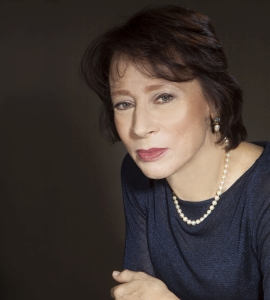Edna Golandsky is the leading exponent of the Taubman Approach. She has earned wide acclaim throughout the United States and abroad for her extraordinary ability to solve technical problems and for her penetrating musical insight. She received both her bachelor of music and master of music degrees from the Juilliard School, following which she continued her studies with Dorothy Taubman.
Performers and students from around the world come to study, coach, and consult with Ms. Golandsky. A pedagogue of international renown, she has a long- established reputation for the expert diagnosis and treatment of problems such as fatigue, pain, and serious injuries, including carpal tunnel syndrome, tendonitis, focal dystonia, thoracic outlet syndrome, tennis and golfer’s elbow, and ganglia. She has been a featured speaker at many music medicine conferences. She is also an adjunct professor of piano at the City University of New York (CUNY).
Ms. Golandsky has lectured and conducted master classes at some of the most prestigious music institutions in the United States, including the Eastman School of Music, Yale University, the Curtis Institute of Music, and Oberlin Conservatory. Internationally, she has given seminars in Canada, Holland, Israel, Korea, Panama, and Turkey. In 2001 she was a guest lecturer at the European Piano Teachers’ Association in Oxford, England, and in July 2003 she conducted a symposium in Lecce, Italy. In August 2010, she gave a master class and judged in a piano competition at the Chatauqua Festival. She was a guest presenter at the World Piano Pedagogy Conference in 2003 and 2009 and was engaged to return in October 2010. In 2011 she was a guest presenter at the Music Teachers National Association in Milwaukee, Wisconsin; the Piano Teachers Congress of New York; and the Music Teachers Association of California. She gave week-long workshops at the Panama Jazz Festival at 2009, 2010, 2012 and 2014. In 2012, she presented as a part of the New York University Steinhardt Master Class series and at the Music Teachers Association of California annual convention in San Diego.
For the past several years, Edna Golandsky has been working with violinist, Sophie Till, who came seeking relief from long-standing problems. This has led to developing a comprehensive application of the Taubman work to string instruments. Together, they went to England in 2013, to conduct a symposium for both piano and violin at Cambridge University.
Edna Golandsky is the person with whom Dorothy Taubman worked most closely. In 1976, Ms. Golandsky conceived the idea of establishing an Institute where people could come together during the summer and pursue an intensive investigation of the Taubman Approach. She encouraged Mrs. Taubman to establish the Taubman Institute, which they ran together as co-founders. Mrs. Taubman was executive director and Ms. Golandsky served as artistic director. Almost from the beginning, Mrs. Taubman entrusted Ms. Golandsky with the planning and programming of the annual summer session. She gave daily lectures on the Taubman Approach and later conducted master classes as well. As the face of the Taubman Approach, Ms. Golandsky discusses each of its elements in a ten- volume video series. Mrs. Taubman has written, “I consider her the leading authority on the Taubman Approach to instrumental playing.”
Edna Golandsky’s lectures have broadened the Taubman Approach and imparted it to many people who have come to benefit from it. As her knowledge deepened over the years, she continued to develop new material. She presents the Taubman Approach in its entirety in the ten-DVD set The Taubman Techniques. In conjunction with the Golandsky Institute, she has further developed the Taubman Approach in the three-DVD set, The Art of Rhythmic Expression, which has been praised worldwide; and the two-DVD set, The Forgotten Lines: Lines that Support, Surround, and Intensify the Melody.

